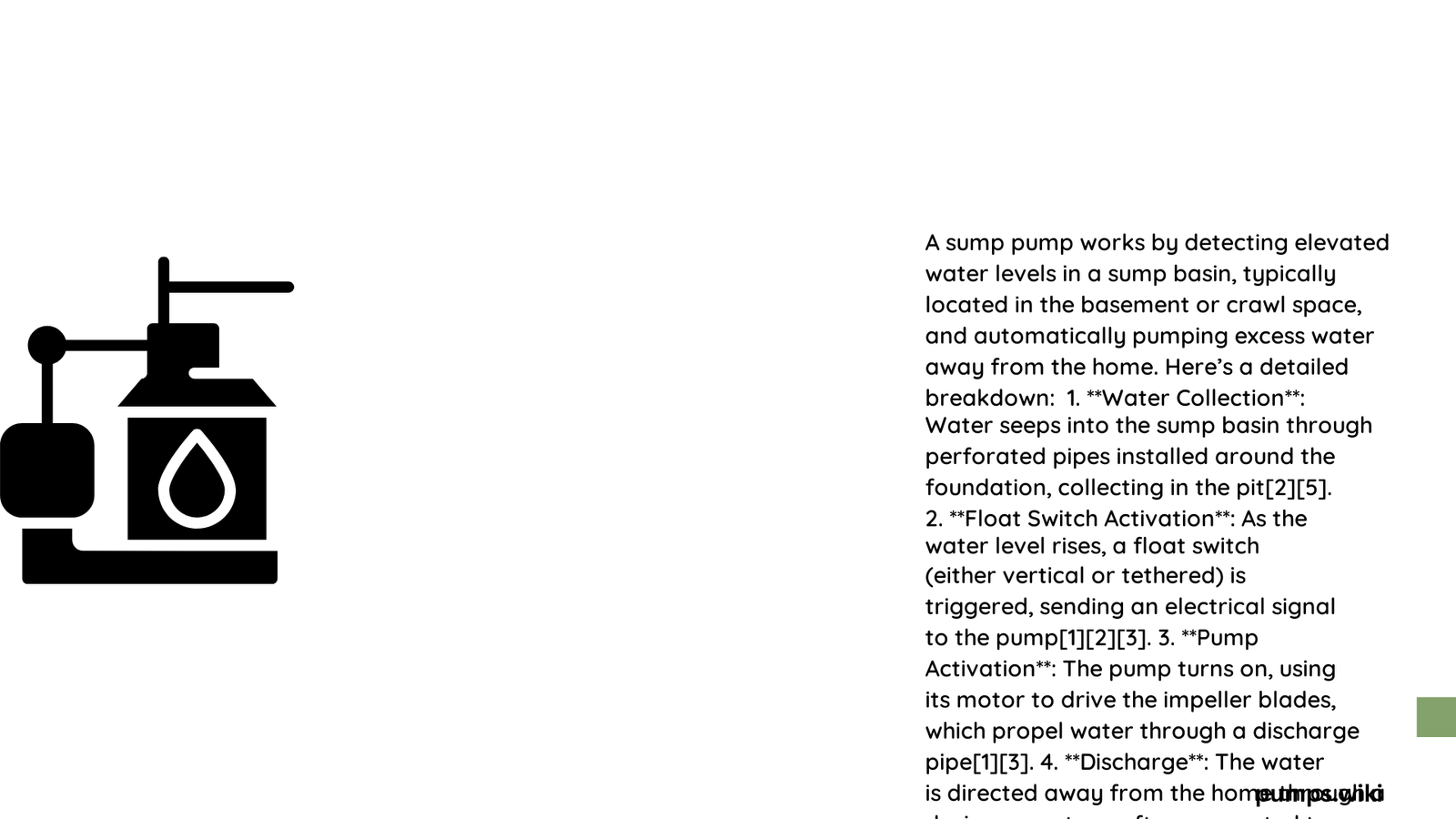When floodwaters threaten your basement, a sump pump becomes your first line of defense against potential water damage. This critical home protection system automatically detects rising water levels, activates its powerful motor, and swiftly removes excess water from your property, preventing structural damage, mold growth, and costly repairs through a sophisticated yet straightforward mechanical process.
What Triggers a Sump Pump During Flooding?
How Does the Float Switch Detect Water Levels?
The float switch serves as the sump pump’s primary sensor mechanism. As water rises in the sump pit, this buoyant device ascends, functioning like a sophisticated trigger. When water reaches a predetermined threshold, the float switch activates the pump’s electrical circuit, initiating the water removal process.
Key Float Switch Characteristics
- Buoyancy-driven activation
- Precise water level detection
- Automatic pump engagement
- Typically made of durable plastic or foam materials
What Mechanical Process Removes Water?
When activated, the sump pump employs a centrifugal force mechanism to expel water:
- Motor Activation
- Electrical current powers the pump motor
- Impeller begins rapid rotation
-
Creates centrifugal force pushing water outward
-
Water Displacement
- Water enters through intake screen
- Impeller propels water through discharge pipe
- Redirects water away from foundation
What Determines Pump Efficiency?
| Pump Characteristic | Performance Impact |
|---|---|
| Flow Rate | 20-50 gallons per minute |
| Power Consumption | 500-1500 watts |
| Vertical Lift Capacity | 10-25 feet |
| Pump Type | Submersible vs Pedestal |
What Protection Strategies Enhance Flood Mitigation?

How Can Homeowners Optimize Sump Pump Performance?
Effective flood protection requires strategic planning:
- Install battery backup systems
- Conduct monthly pump testing
- Maintain clear discharge pipes
- Ensure proper basin drainage slope
- Professional annual maintenance
What Potential Challenges Might Occur?
Potential sump pump challenges include:
– Power outage interruptions
– Mechanical component failures
– Discharge pipe blockages
– Inadequate pump capacity
What Maintenance Prevents Flood Risks?
How Often Should Sump Pumps Be Inspected?
Recommended maintenance schedule:
– Monthly functional testing
– Quarterly debris removal
– Annual professional inspection
– Replace backup batteries every 5-7 years
What Signs Indicate Potential Pump Failure?
Critical warning indicators:
– Unusual grinding noises
– Inconsistent water removal
– Visible rust or corrosion
– Frequent motor cycling
– Water accumulation despite pump operation
Technical Specifications and Recommendations
Ideal Sump Pit Dimensions
- Depth: 24 inches
- Diameter: 18 inches
- Recommended Volume: 30-40 gallons
Estimated Installation Costs
- Basic Pump: $100-$300
- Professional Installation: $500-$2,000
- Battery Backup: $200-$500
Conclusion
Understanding how a sump pump works during flooding empowers homeowners to protect their property effectively. Regular maintenance, strategic installation, and proactive monitoring ensure reliable water management during potential flood scenarios.
